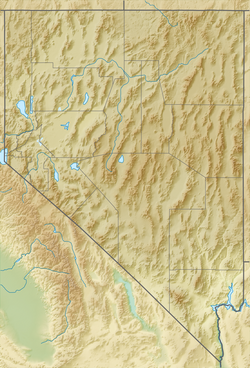| Sunrise Formation | |
|---|---|
| Stratigraphic range: Hettangian-Sinemurian ~ | |
| Type | Formation |
| Sub-units | Ferguson Hill & New York Canyon members |
| Overlies | Gabbs Formation |
| Lithology | |
| Primary | Limestone |
| Other | Shale, siltstone, sandstone |
| Location | |
| Coordinates | 38°30′N118°06′W / 38.5°N 118.1°W |
| Approximate paleocoordinates | 19°30′N56°12′W / 19.5°N 56.2°W |
| Region | Nevada |
| Country | United States |
| Extent | Gabbs Valley Range |
The Sunrise Formation is a geologic formation in Nevada. It preserves fossils dating back to the Hettangian to Sinemurian stages of the Early Jurassic period. [1]

